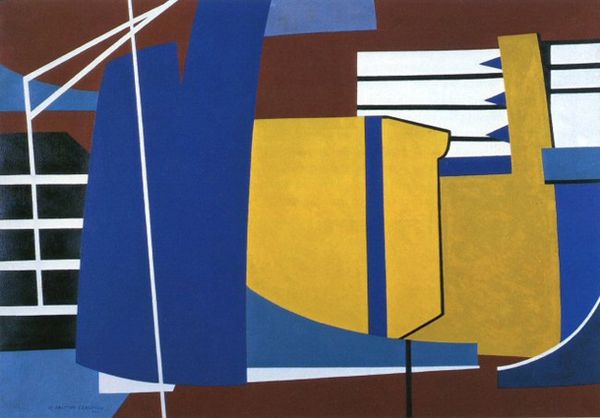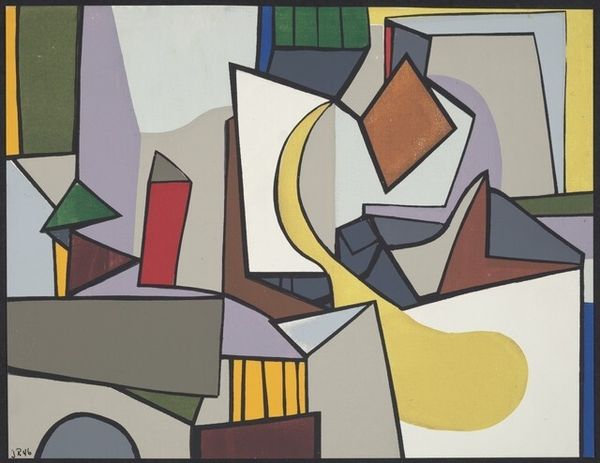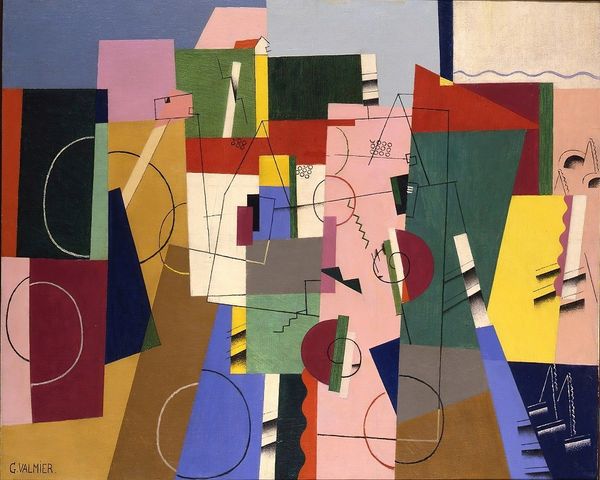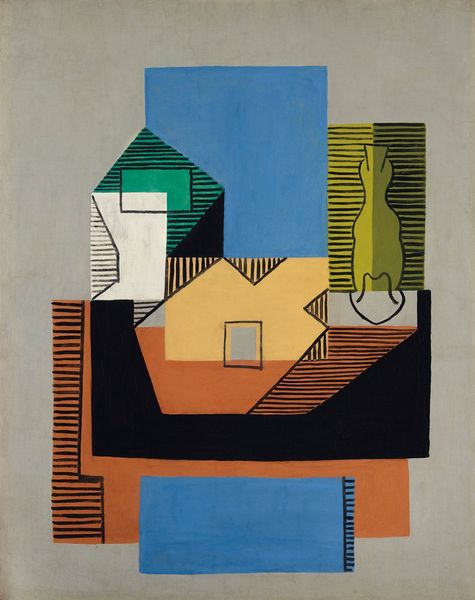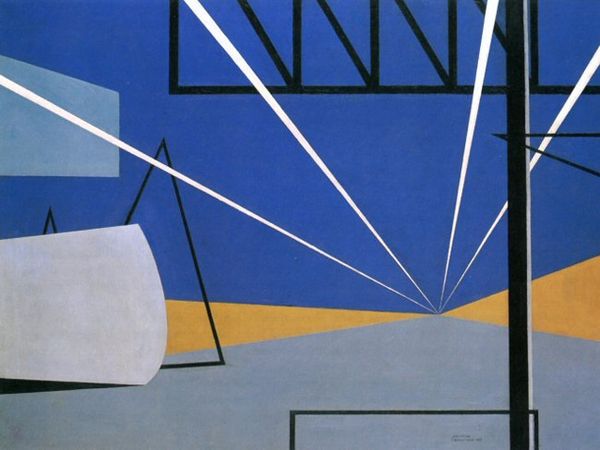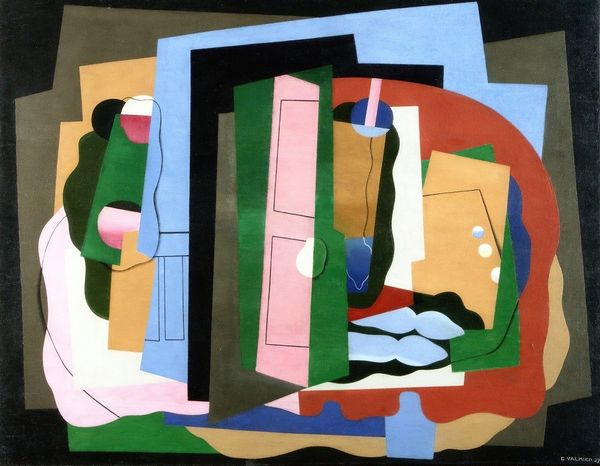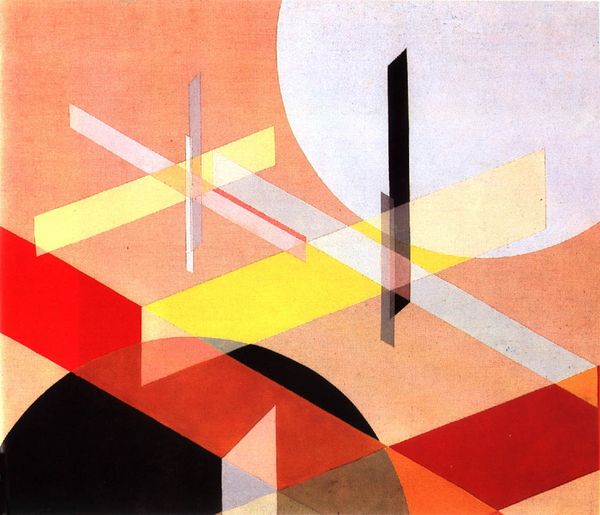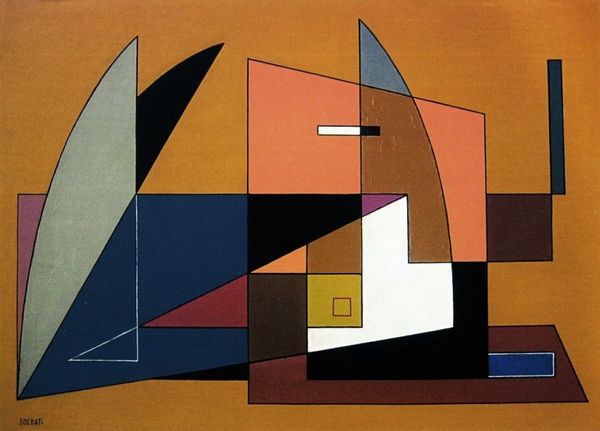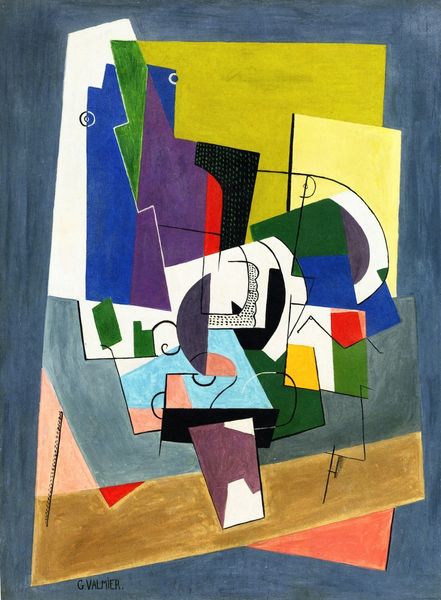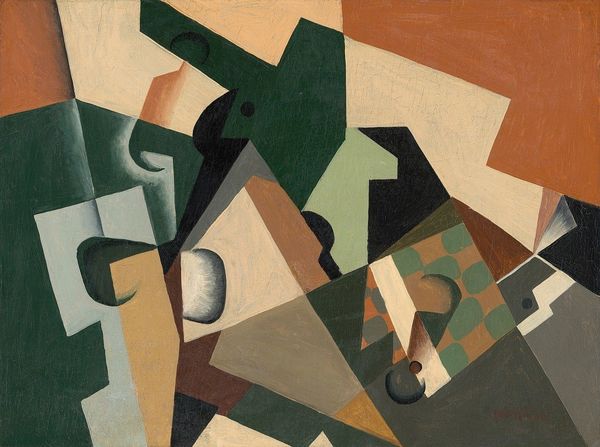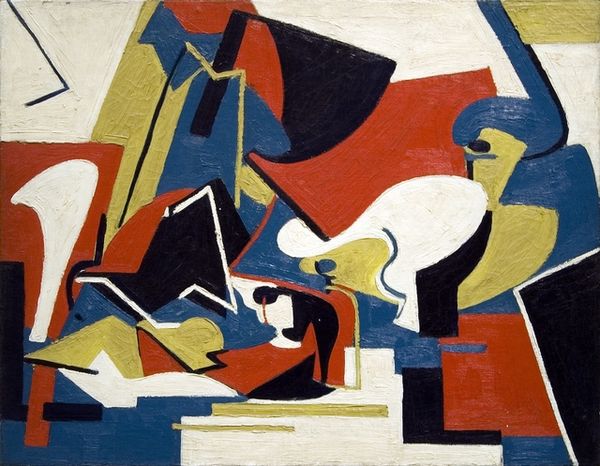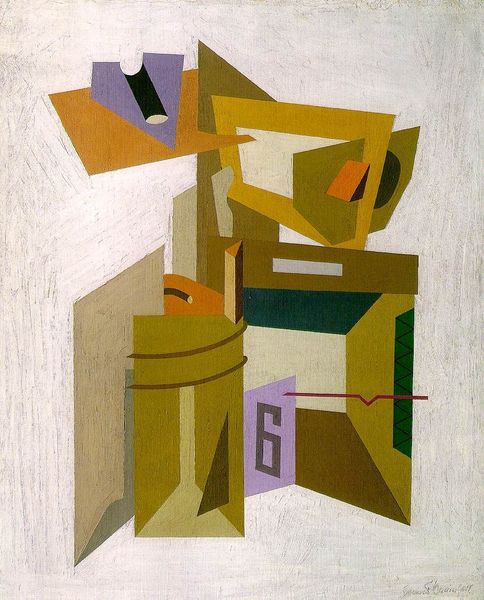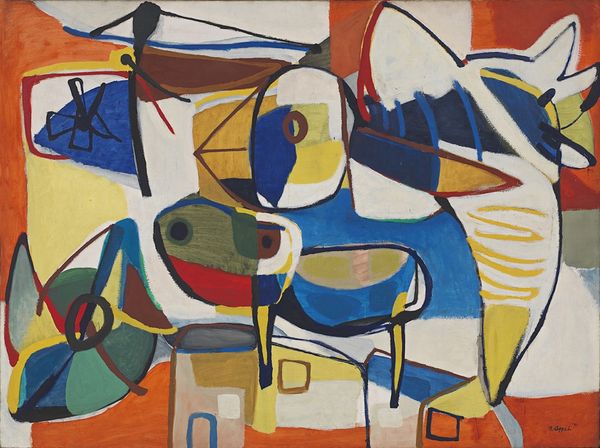
painting, oil-paint
#
cubism
#
colourful
#
painting
#
bold colours
#
oil-paint
#
pop art
#
form
#
geometric
#
abstraction
#
line
#
bold colour
#
modernism
Copyright: Stuart Davis,Fair Use
Editor: Standing here, we're looking at Stuart Davis’ "Egg Beater No. 4," an oil on canvas from 1928. What strikes me is the flatness, how he uses these bold colors to almost build a shallow stage. What are your thoughts, how do you interpret this work? Curator: It presents a fascinating study in form and space. Notice how Davis abandons traditional perspective, favoring instead a layering of geometric shapes. Consider the interplay between the positive and negative space. Does the arrangement create a sense of depth, or does it intentionally flatten the composition? Editor: I see what you mean. The lines create implied shapes, but it is not easy to get a sense of where everything begins or ends. I thought he used color, line and shapes just to celebrate "abstract form". Curator: Indeed, color plays a pivotal role. Observe the carefully chosen palette. Are the hues harmonious or clashing? And how do they affect your emotional response to the painting? Also, regarding shapes and lines, one could delve into a semiotic analysis. Editor: Semiotic analysis? I see it now, you mean treating those geometric shapes almost like language elements. Like, the lines aren’t just lines—they are also boundaries or connections? Curator: Precisely. Each element contributes to a system of signs, inviting the viewer to decode its meaning. Is the artist intending to represent something tangible? Or is this simply about exploring pure abstraction? Editor: I guess it makes sense now. So he uses recognizable things like egg beaters as just one starting point for lines and colors to stand in for larger feelings, or other, more complicated objects. I had not seen it that way, thinking of the image just on its face. Curator: Precisely. So how has this approach influenced your understanding of "Egg Beater No. 4"? Editor: It opened up an entire system. I’m thinking of the work differently now, thank you! Curator: Indeed, analyzing Davis' technique will likely deepen your relationship to modern art and abstract forms.
Comments
No comments
Be the first to comment and join the conversation on the ultimate creative platform.
